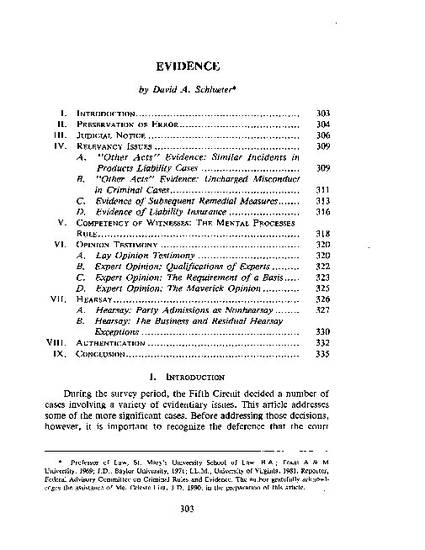
This article reviews decisions by the United States Court of Appeals for the Fifth Circuit on evidence issues and concludes that if an attorney has any hopes of obtaining appellate relief on an evidentiary issue, it is essential that the issues be presented concisely and completely to the trial court. The appellate courts will not reverse an evidentiary ruling of a trial court, even if the trial court has erred. This deference to the trial court is in recognition of the hundreds of rulings on evidence that the trial court must conduct within the course of a trial. In order to effectively assert on appeal that the trial court made an erroneous evidentiary ruling, counsel must have perfected the record at trial.
Normally, counsel can perfect the record by formally proving the proposition on which he or she is relying. The proponent must authenticate the offered item by showing that it is what it purports to be. The exception to this is when counsel can demonstrate that the offered fact is not reasonably in dispute; this judicial notice relieves the jury from deciding whether the fact exists. At a minimum, evidence offered by counsel should meet the relevancy threshold; counsel should demonstrate that the evidence makes the existence of a fact more probable, or less probable. Other forms of evidence that must be proven up, or an exemption must be argued for, include competency of the witness, opinion testimony, and hearsay evidence. Even if counsel properly preserved error in the case and the trial court clearly erred in its ruling on the evidence, the appellate court will not overturn an evidentiary ruling unless the “ruling was so erroneous as to constitute an abuse of discretion.”
